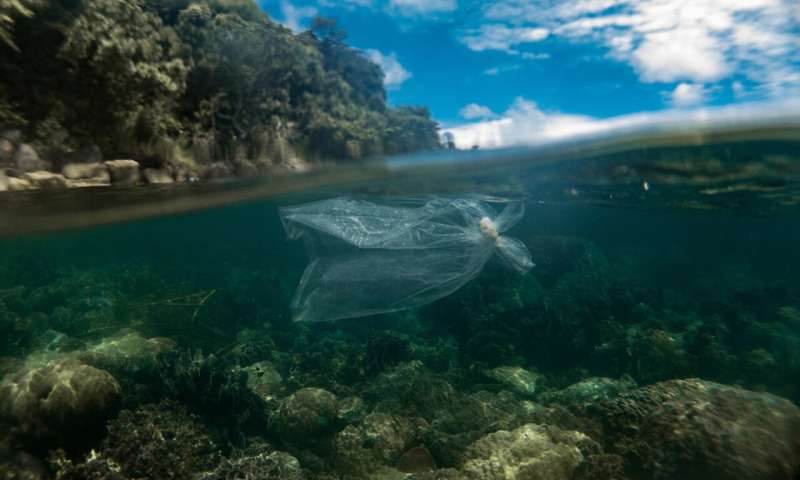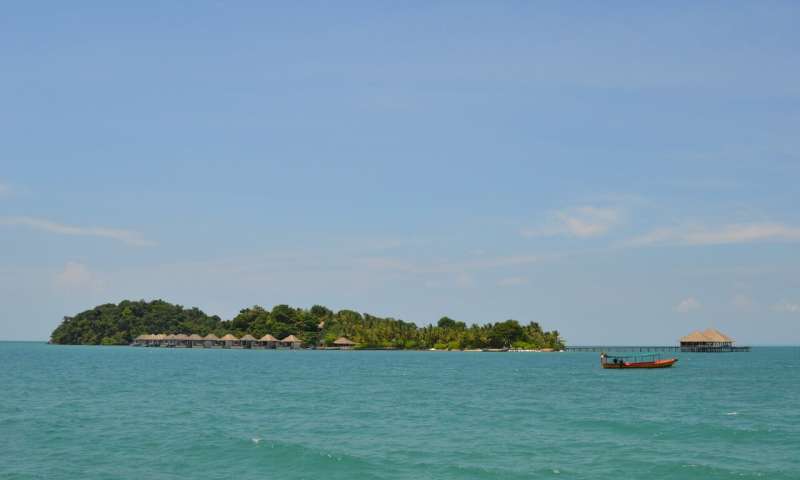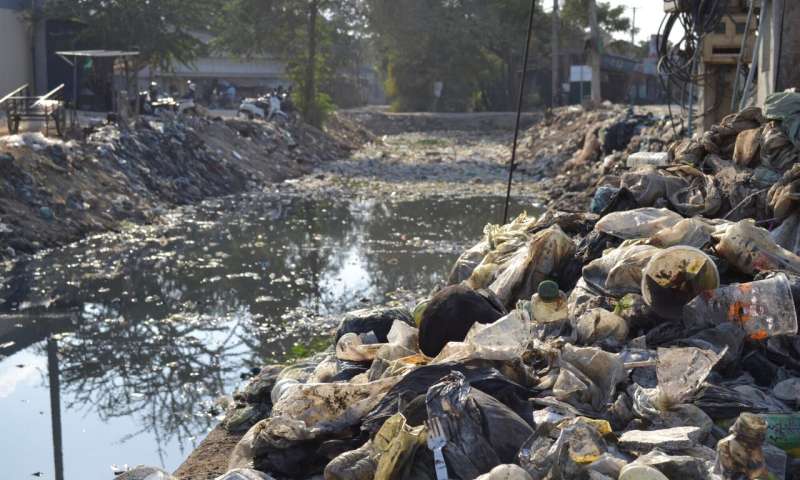Credit: Fauna & Flora International
Take a moment to imagine yourself on a sun-kissed beach on Koh Rong, watching the sea foam onto the white sand and hearing the gentle rustle of tropical rainforest behind you. The stunning beaches and vibrant marine biodiversity of Koh Rong and Cambodia's other islands may be precious, but not all is idyllic. With each rising tide, waves of bottles, bags and other waste wash up on the shoreline, a symptom of the estimated eight million tons of plastic that seep into global oceans each year—the equivalent of over 26,000 Boeing 747 airplanes. This issue is affecting marine ecosystems from the Coral Triangle to the Arctic Circle, and Cambodia is by no means immune from this global scourge.
Plastic pollution harms wildlife and communities
It is well known that marine plastic pollution harms ocean life, including many species found in Cambodian waters. Endangered sea turtles may mistakenly swallow plastics bags, which closely resemble their jellyfish prey, or find their nesting beaches covered in trash. Plastic bags and nets can smother or even kill corals—the cornerstones of marine ecosystems—with recent research also showing that exposure to plastic particles increases coral disease outbreaks. Tiny pieces of plastic are also swallowed by fish and other marine creatures, entering the food chain and even ending up in seafood destined for human consumption.
But the plastic pollution problem is not just an environmental one—it is a social issue as well. Mismanaged waste, including plastic, can harm human health, especially in remote island communities. In addition to the health risks from eating seafood contaminated by marine plastic pollution, mismanaged plastic waste on land can clog sewers and drains, leading to flooding and the spread of water- and mosquito-borne diseases. In rural Cambodia, plastic is often burned, a process which releases toxic fumes that can cause lifelong health problems and even death. There is also an economic price to pay—plastic pollution is an eyesore that poses a risk to the big revenues pouring in from the islands' rapidly growing tourism sector. Our concern is that the social impacts of mismanaged plastic waste will hit hardest in vulnerable coastal communities who depend on the ocean most directly.
Credit: Fauna & Flora International
Building an evidence base
As a vital first step towards addressing marine plastic pollution sources in Cambodia, Fauna & Flora International (FFI) teamed up with researchers from Royal University of Phnom Penh, Prek Leap National College of Agriculture and Kuda Divers to conduct interviews, household questionnaires, beach transects and not-so-glamorous waste surveys, which involved sorting through piles of discarded rubbish. This work was carried out at FFI's island project sites in Koh Rong and Koh Sdach, in addition to the burgeoning coastal metropolis of Sihanoukville, which is thought to be a major source of—and potential solution to—the plastic pollution problem afflicting the nearby islands.
Our findings revealed that plastics account for 80% of coastal pollution found on mainland beaches. Single-use plastic bags and bottles were dominant, in addition to cigarette butts. Surveys on one island found an average of 12 single-use plastic bags are used per household per day. Furthermore, most plastic waste is dumped into the sea, with the remainder burned in the open—a result of a dependency on plastic products but a lack of effective waste management options. As if this wasn't enough, the majority of unwanted fishing nets are discarded into the ocean, creating the potential for 'ghost fishing' whereby floating nets can trap and kill animals and coral reefs for years after disposal.
Cambodia’s Koh Rong & Koh Sdach archipelagos may seem like a tropical idyll, but these islands are facing an ever-increasing threat from plastic pollution. Credit: Bianca Roberts/FFI
These results clearly demonstrate the enormous plastic pollution problem facing Cambodia's coastal wildlife and communities, highlighting an urgent need to tackle the issue at its source.
Our role in the plastic future
Based on this initial research, FFI and partners have identified potential solutions.
Whilst gathering information on plastic use, we saw many badly polluted sites, highlighting the scale of the issue across Cambodia. Credit: Bianca Roberts/FFI
Firstly, we must continue to gather information to better inform long-term marine plastic reduction. This should not only consist of field research, but also of listening to local viewpoints and assessing community and business needs related to use and disposal of plastic. In order to improve waste management to prevent pollution, we must also support those who rely on discarded plastics for income. Ultimately, FFI aims to collaborate with communities to design locally led projects that address the threats posed by plastic waste and pollution to local livelihoods and marine life.
Nor will efforts be focused solely on our island project sites. We recognize the importance of supporting local and national government to connect with remote communities and strengthen laws to eliminate plastic pollution. Through an informed combination of approaches, we can achieve a meaningful reduction in the quantities of plastic blighting Cambodian coasts and waters by addressing its key sources.
FFI and partners have been driving forward marine conservation in Cambodia for over nine years, and as our work expands, we look forward to advancing the battle against marine plastic pollution across the kingdom's coastal environment.
Provided by Fauna & Flora International


























